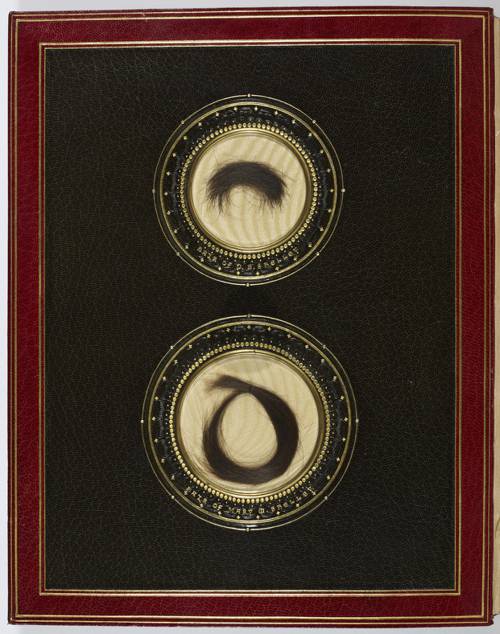
FAQ About Mary Shelley

Who was Mary Shelley?
Mary Shelley was an English novelist, best known for her Gothic novel "Frankenstein; or, The Modern Prometheus." Born on August 30, 1797, in London, she was the daughter of philosophers William Godwin and Mary Wollstonecraft. Shelley was a pivotal figure in the literary scene of her time and made significant contributions to the genre of science fiction.

What is Mary Shelley famous for?
Mary Shelley is most famous for her novel "Frankenstein; or, The Modern Prometheus," published in 1818. This work is considered one of the earliest examples of science fiction. It tells the story of Victor Frankenstein, a scientist who creates a sentient creature, posing deep ethical and philosophical questions about creation, responsibility, and the nature of humanity.

When was Mary Shelley born and when did she die?
Mary Shelley was born on August 30, 1797, and she died on February 1, 1851.

Who were Mary Shelley's parents?
Mary Shelley's parents were William Godwin and Mary Wollstonecraft. William Godwin was a well-known political philosopher, and Mary Wollstonecraft was a famous advocate of women's rights and the author of "A Vindication of the Rights of Woman."

What inspired Mary Shelley to write 'Frankenstein'?
The inspiration for "Frankenstein" came during a summer stay at Lord Byron's villa near Lake Geneva in 1816. Due to the infamous "year without a summer," the group, which included Percy Bysshe Shelley and Claire Clairmont, was confined indoors, where Byron proposed that each write a ghost story. This challenge, coupled with conversations on science and the nature of life, inspired Mary Shelley to conceive "Frankenstein."

How old was Mary Shelley when she wrote 'Frankenstein'?
Mary Shelley began writing "Frankenstein" when she was just 18 years old. The novel was published two years later in 1818, when she was 20.

What are some themes explored in Mary Shelley's 'Frankenstein'?
"Frankenstein" explores several themes, including the dangers of unchecked ambition and scientific exploration, the complexities of creation and creator responsibilities, the isolation and alienation resulting from societal rejection, and the quest for identity and understanding.

Did Mary Shelley write other novels besides 'Frankenstein'?
Yes, Mary Shelley wrote several other novels besides "Frankenstein." Her works include "Valperga" (1823), "The Last Man" (1826), "The Fortunes of Perkin Warbeck" (1830), "Lodore" (1835), and "Falkner" (1837). She also wrote short stories, travel books, and biographical articles.

What is the setting of 'Frankenstein'?
"Frankenstein" is set in various locations across Europe, including Geneva, Switzerland; Ingolstadt, Germany (where Victor Frankenstein creates the monster); England; the Scottish Orkneys; and the Arctic regions. These diverse settings contribute to the novel's exploration of themes like isolation and the quest for knowledge.

What is the full title of Mary Shelley's 'Frankenstein'?
The full title of Mary Shelley's novel is "Frankenstein; or, The Modern Prometheus." The subtitle references the Greek myth of Prometheus, highlighting themes of creation and the consequences of defying natural limits.

How did Mary Shelley's personal life influence her writing?
Mary Shelley's personal life significantly influenced her writing. Her experiences of loss, including the deaths of her mother shortly after her birth and several of her children, are reflected in the themes of mortality and creation in "Frankenstein." Her relationship with her husband, Percy Bysshe Shelley, and their interactions with prominent literary figures of the time also shaped her literary environment.

What impact did 'Frankenstein' have on literature and culture?
"Frankenstein" has had a profound impact on literature and culture, establishing Mary Shelley as a pioneering figure in science fiction. It posed critical questions about scientific ethics, human identity, and technological responsibility that continue to resonate. The novel has inspired countless adaptations in film, theater, and other media, while also influencing numerous writers and thinkers across disciplines.

Was Mary Shelley involved in any literary circles or movements?
Mary Shelley was closely associated with the Romantic literary movement, primarily through her marriage to poet Percy Bysshe Shelley and her interactions with figures like Lord Byron. These associations exposed her to the era's revolutionary ideas about nature, individuality, and artistic expression, which are evident in her work.

Where is Mary Shelley buried?
Mary Shelley is buried in St Peter's Churchyard in Bournemouth, England. She was interred there with her parents and the remains of her husband, Percy Bysshe Shelley, whom she had arranged to have reburied in the family tomb.

What challenges did Mary Shelley face in her lifetime?
Mary Shelley faced numerous challenges throughout her life, including societal expectations as a woman writer in the 19th century, financial difficulties, and personal tragedies such as the deaths of her husband and several of her children. Despite these hardships, she continued to write and contribute to literary culture.

How did Mary Shelley's 'Frankenstein' differ from typical Gothic novels of her time?
While "Frankenstein" shares elements with contemporary Gothic novels, such as dark, mysterious settings and themes of horror, it stands out due to its focus on scientific discovery and philosophical questions. Unlike traditional Gothic tales that often rely on supernatural elements, "Frankenstein" examines the nature of humanity and the consequences of human ambition through a scientific lens, paving the way for the genre of science fiction.

Did Mary Shelley use her own name when publishing 'Frankenstein'?
When "Frankenstein" was first published in 1818, it was published anonymously. It wasn't until the 1823 edition that Mary Shelley was credited as the author. At the time, it was not uncommon for women writers to publish anonymously or under male pseudonyms due to societal norms.

What role did Mary Shelley's mother play in her life?
Mary Shelley's mother, Mary Wollstonecraft, died shortly after giving birth to her, so Shelley did not know her personally. However, Wollstonecraft's revolutionary ideas on women's rights and education heavily influenced Mary Shelley. She grew up reading her mother's works, which instilled in her a respect for Wollstonecraft's intellectual legacy and feminist principles.

How did 'Frankenstein' influence the science fiction genre?
"Frankenstein" is often considered one of the earliest examples of science fiction. It introduced the theme of a scientist whose pursuit of knowledge leads to unintended consequences, a motif that would become central to the genre. The novel's exploration of artificial life, ethical scientific exploration, and the impact of technological advancements are foundational to many science fiction narratives.

What literary techniques did Mary Shelley use in 'Frankenstein'?
In "Frankenstein," Mary Shelley employed several literary techniques, including frame narratives, multiple perspectives, and epistolary form. The novel's structure allows readers to experience the story through different viewpoints, enhancing its thematic complexity. Shelley's descriptive language and use of Gothic elements also contribute to the novel's enduring suspense and emotional depth.
